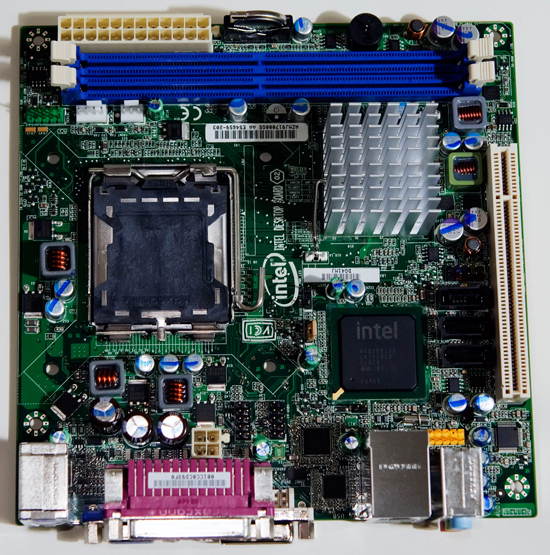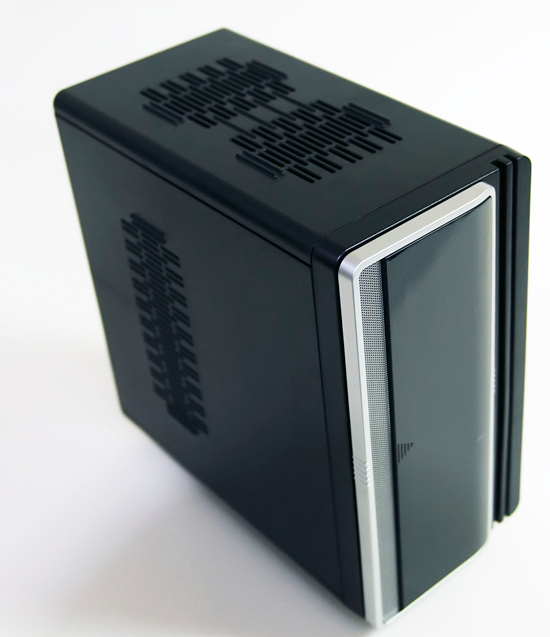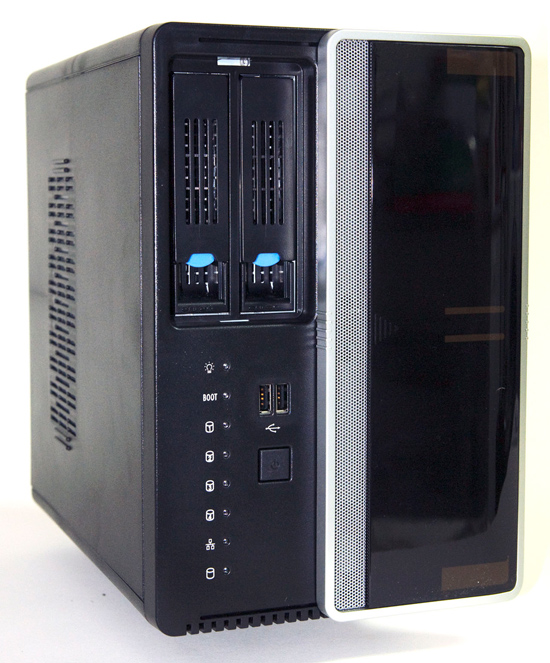Home Servers, Network Storage and the Case House
by Loyd Case on December 2, 2009 12:00 AM EST- Posted in
- Cases/Cooling/PSUs
The X Factor
All we really need around the house is reliable network access, the ReadyNAS would probably run forever – or at least, until it died. But I do like to play with new toys, and I’d been thinking about bringing up a Windows Home Server system for quite a few months.
Of course, you can just buy an off-the-shelf WHS system built by HP or a number of other companies, but that would be too easy. All the PCs in our house were built from the ground up, so I felt compelled to actually build a Windows Home Server system from scratch. Of course, I could have simply taken some of the old PC hardware around here and built up a server from spare parts. That had some attraction, since it would have been fairly inexpensive. It would also have been, in my mind, a somewhat inelegant solution. The smallest power supply I have here is 430W, and even micro ATX cases are bulkier than the ReadyNAS 600.
On the other hand, I’ve had this motherboard for a few months now.

This mini-ITX board is made by Intel, ostensibly for small office or media centric PCs. I never really found a use for it, as most of my applications typically require more graphics horsepower. The Intel DG41MJ board uses the Intel G41 chipset and accepts LGA 775 CPUs (up to 65W TDP.)
Then, one day, I was at my favorite local white box store (Central Computer, in San Jose, CA), and stumbled across this case.

At first, I thought it was just another of many small form factor, slimline cases, ostensibly designed as small Media Center PC cases. But it seemed slightly more bulky than the typical case of that type. The feature list also mentioned “two hot swappable SATA drive bays.” So I slid the front panel open and found that there were, indeed, a pair of hot swappable drive bays.

I checked out the specs and discovered that the Chenbro ES32067 is actually a mini-ITX server case. At roughly $120, it ships with a 150W PSU – smaller than the 220W PSU in the ReadyNAS 600. So I bought one.










87 Comments
View All Comments
tyski - Thursday, December 3, 2009 - link
For better or worse, he used enterprise-class hard drives that do indeed cost ~$300 for 2TB (http://www.newegg.com/Product/Product.aspx?Item=N8...">http://www.newegg.com/Product/Product.aspx?Item=N8..., not the cheaper consumer-class hard drives that most of us use in our home PC builds. For work-related server builds, I prefer WD's enterprise-grade drives. But for a home server that is just going to hold a crap load of movies/music, I have to agree with the other posters, consumer-grade hard drives should be more than adequate, especially if you have good backup system in place.strikeback03 - Thursday, December 3, 2009 - link
My understanding of the article was that he already had these HDDs around, which is why he used them and quoted their cost. Not that anyone looking to replicate this system should necessarily buy this exact hardware.Though I don't see the point of the hot-swappable trays in this system, or of that case (esp if it is hidden in the basement). I might well turn my current desktop (E6600/P965) into a WHS once I build a new desktop.
strikeback03 - Thursday, December 3, 2009 - link
My understanding of the article was that he already had these HDDs around, which is why he used them and quoted their cost. Not that anyone looking to replicate this system should necessarily buy this exact hardware.Though I don't see the point of the hot-swappable trays in this system, or of that case (esp if it is hidden in the basement). I might well turn my current desktop (E6600/P965) into a WHS once I build a new desktop.
MrDiSante - Thursday, December 3, 2009 - link
Strongly agreed. On top of that I think the choice of case and HDDs is abysmal. You could easily have gotten 3x1.5TB for under $300 and gotten a mid-tower already with a power supply for under $60. That would've made your build actually palatable for the features that you get, although I'd still have gone with the HP's - their value added is worth it.nilepez - Thursday, December 3, 2009 - link
Didn't he say he had the drives sitting around already? They seem like overkill, but if he already owns the drives, why buy more drives?Plifzig - Thursday, December 3, 2009 - link
I've almost pulled the trigger on one of those in the past. Any chance that could serve my high-end stereo setup with lossless audio?I've also been considering the Logitech Squeezebox or Transporter route.
MadMan007 - Thursday, December 3, 2009 - link
Squeezecenter (the softwre for Squeezeboxes) runs perfectly well on WHS. Other network devices that just need to be pointed to a shared folder can stream media as well.thirdspaced - Wednesday, December 2, 2009 - link
I build all my PCs, but I chose the HP Mediasmart for several reasons.1. Extras
2. More Energy efficient then most home builds
3. Small compact size
4. Cost (well under $500 on places like Amazon)
The main criticism here is cost. Loyd could have saved money by getting 1.5 TB drives ($98 this last weekend )
mckirkus - Wednesday, December 2, 2009 - link
As our 'puters get fast enough to run cat brain simulators it behooves Anand to focus more on this sort of thing. Home automation, Media Center tech, explanations of technologies like Mkv, DTS vs. AC3, remote consolidation, home servers.Emerging consumer standards and trends in other words. That's tech too right?
jigglywiggly - Wednesday, December 2, 2009 - link
Why'd you buy a server chasis? They are overpriced for the most part, and are small, just get a large mid tower case, or full size tower, for cheap, and if you want HD bays on the front, you can buy drive bays for that.